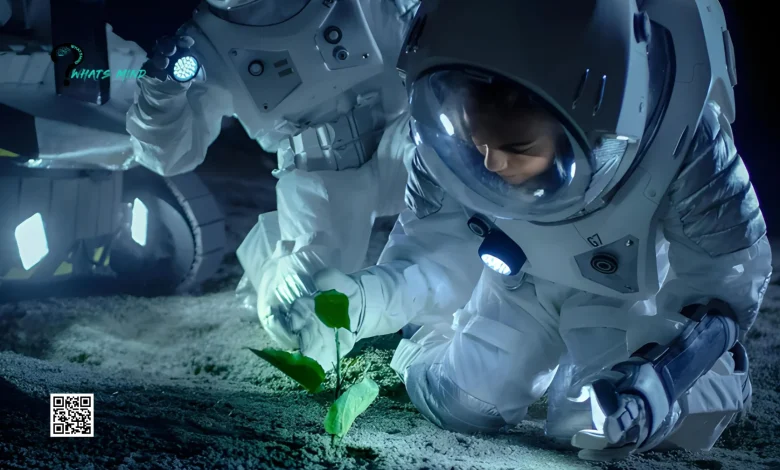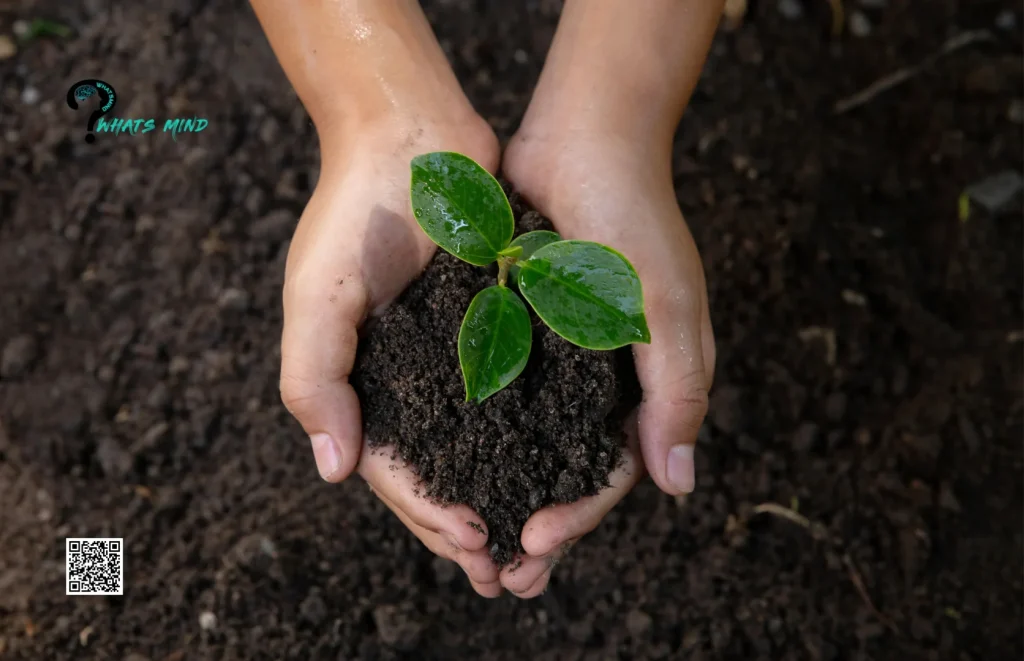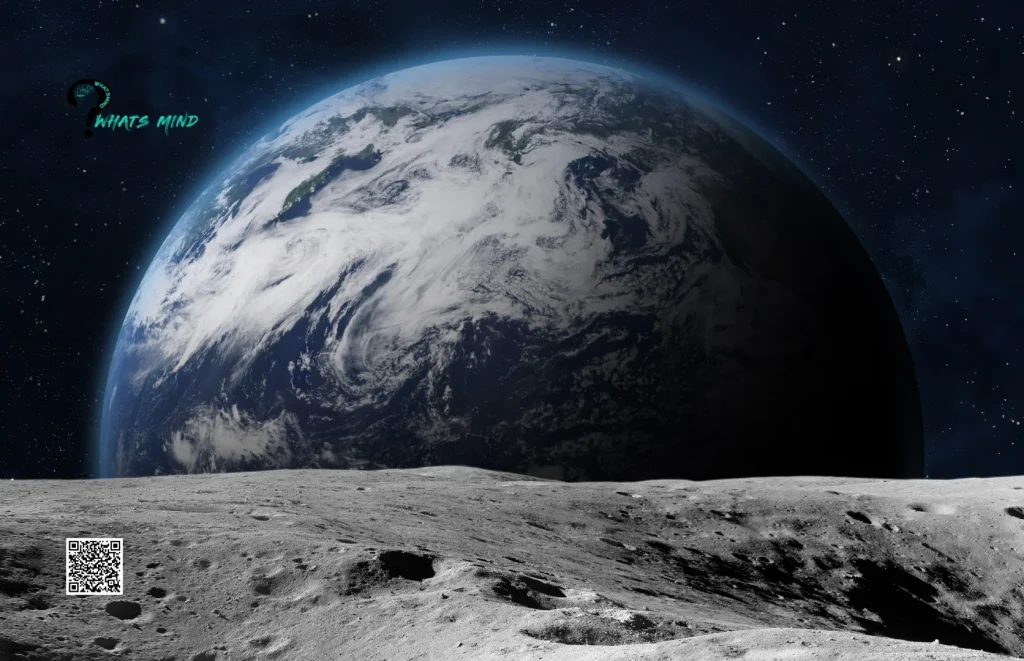What could be the Challenges to Life on the Moon? NASA to Grow Plant on Moon for the First Time

Scientists and researchers are exploring other planets, like Mars, for sustainable living. And so the moon is no exception, as astronauts are planning to make the moon habitable. After decades of landing on the moon for the first time, astronauts plan to explore it as a sustainable habitat for their future long-term space missions.
The question arises: Does the moon’s surface provide a sustainable environment for life? The idea may sound surprising to you. Astronauts are foreseeing growing plants on the moon and thus exploring the sustainability of a new habitat for humans.
NASA has made this groundbreaking research that, after decades of the return of astronauts from the moon, they are experimenting with growing plant on moon. Astronauts brought back some soil samples from the moon with them, and now scientists and researchers are working on this virtual reality to happen in the form of life on the moon.
Have you ever dreamt of staying on the moon and enjoying the space out there? This is an amazing idea. Isn’t it? But the question is whether life on the moon is possible or not. And if yes, then what are the challenges that you would face to survive on the moon?
Let’s explore the idea of life on the moon, initiated by plantations on the moon. Furthermore, you will get an insight into the challenges of life on the moon. Let’s dive together.
Table of Contents
Lunar Soil and Natural Soil

Do you know that almost 50 years ago, astronauts brought back lunar soil samples during their Apollo 11, 12, and 17 missions? This lunar soil is called “regolith.” Though the scientists had no plans of utilizing this regolith in any way, now, after decades, scientists at NASA are experimenting with growing plants in it.
You know that the lunar soil is dry, harsh, and very different from the natural soil. Now the question is whether this harsh, dry soil with scarce sunlight would be helpful for plant growth. Researchers at NASA are very optimistic about the growth of plants on the moon.
Scientists used three different pots for the soil samples of Apollo 11, 12, and 17. You will be amazed to know that plant growth in lunar soil depends on the age of the soil. The older and more mature the regolith is, the more toxic responses you will get.
Lunar Effects on Agricultural Flora (LEAF)
The LEAF project will help researchers and scientists closely observe the development and growth processes of plants on lunar soil. After 50 years, during the Artemis III mission, which will take place in 2026, astronauts are planning to make the moon a hub or habitat for long-term space explorations. For this purpose, they are experimenting with growing plant on moon.
For this purpose, they planted the Arabidopsis plant in three different plastic pots containing separately the soil brought from the moon on Apollo 11, 12, and 17. And in separate pots, they had earth soil, which was called the control group.
After the plantation, it was observed that the plant in the control group grew fast and strongly. The plants in an off-earth environment took time to germinate. They were smaller in size, grew slower, and came in varied colors. It was surprising for the scientists too.
Challenges to Life on the Moon

NASA is planning to make the moon sustainable for longer space explorations. For this purpose, arranging food, water, essential radiation, and a sustainable environment for life is necessary. By growing crops or plants on the surface of the moon, NASA is trying to make it possible to plant food and nutrients for astronauts during their long-term space missions.
Outer space is harsh for life with no water or oxygen. Scientists and researchers are working to grow plant on moon and thus make them a hub for humans in the future. There are certain challenges to life on the moon, whether it’s crops or human beings staying there.
Let’s get an insight into these challenges to better understand the phenomenon of life on the moon.
- Off Earth Harsh Environment
- Extreme Temperatures
- No water or food
- Low Gravity
1. Off-Earth Harsh Environment
Earth has a very mild and adaptive environment as compared to other planets or outer space. You will be amazed to know that the off-earth environment is quite harsh and difficult to survive in. The lunar environment is harsh as it lacks oxygen and other essential environmental factors for life.
When you land on the moon, you only encounter helium, neon, or hydrogen. You would not find any life surviving oxygen or carbon dioxide there. Life on the moon would not survive unless you were better equipped with such life-saving ingredients.
2. Extreme Temperatures
Earth is a blessed planet with varying temperatures and seasons. It is no less than a blessing to enjoy different weather and temperatures all over the world.
Unlike Earth, the moon has very extreme temperatures, whether high or low. If you happen to meet any astronauts, you will know that the moon has drastically varying temperatures. During the day, it can go up to 260 F, and during the night, it goes to the freezing point of -280 F.
Can you imagine survival in such extreme temperatures? The answer is simply a big no. Whether it’s a plant or a human being, these are rigorous temperatures to survive.
3. No water or food
During any space mission, astronauts have to take their food with them. The outer space has no food or water supply. Long-term space missions have always been difficult for astronauts because of the lack of food and water in outer space.
The moon has no sign of water or any other liquid. If you are venturing into outer space, you must carry these essentials along with you. You would not find a single drop of water or moisture on the moon. And it’s a great challenge to live on the moon.
4. Low Gravity
You will be surprised to know that outer space, or, you may say, the moon lacks the essential gravitational force for a sustainable life. Unlike Earth, the moon has a very low gravity which is another challenge to life on the moon.
As you all know, human life cannot survive without proper gravity. Thus, the low gravity on the moon will result in various health issues, including bone and muscle loss or weakness. Low gravity poses a far-reaching challenge to life on the moon.
Concluding Lines
A sustainable life on the moon is the dream of millions of people. Astronauts and researchers are working on finding a suitable hub and habitat on the moon for human beings. But without essential food and water supplies, along with needed radiation and solar energy, we can never make this dream a reality.
NASA is experimenting with growing plants on the moon and thus arranging food and crops for human beings over there during long-term space missions. But it’s a challenging and long-term research project.
Life on the moon is full of challenges and hardships. The above-mentioned challenges are very basic hurdles for a sustainable life on the moon. Apart from these, there are a lot more difficulties that are to be met in making the moon a hub for long stays and explorations.
How far did you find this article helpful in understanding NASA’s mission to set a sustainable life on the moon by overcoming all the challenges and hardships?
Do you think that science will ever be able to overcome these challenges?
Comment below and let us know your precious thoughts about this informative guide.
More that you’d like to read…
- Dubai is Setting a New Future in Infrastructure with Its New $5 billion Moon Shaped Resort
- How the Floating Glass Museum Incorporates Architectural Beauty and Ecological Sustainability
For more info visit Whatsmind.com




